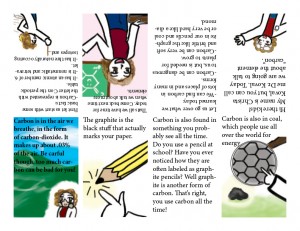Carbon Isomers
Isomers of carbon compounds may have the same molecular formula but different arrangements of atoms in a molecule. There may be also isomerism of atoms, when they have the same atomic number and mass but differ in the energy states. Carbon molecules with one, two, or three atoms of carbon (such as methane CH4, ethane C2H6, or propane C3H8) have only one possible arrangement of the bonding atoms. Molecules with a longer carbon chain (such as butane and isobutene) may have more than one possible configurations of a carbon skeleton: one carbon atom may be branched in the middle of the three-carbon chain. The resulting two isomers: butane with a straight-line carbon chain and isobutene with a branched carbon chain would have the same formula C4H10 but they have different physical properties: melting points, boiling points, densities, and heats of formation. Longer chains of carbon produce more structural isomers with the atoms arranged in a different order.
Carbon Allotropes
Carbon exists in several physical forms with different molecular configurations, which are called allotropes. Physical properties of carbon’s allotropic forms vary. Carbon as a chemical element has eight different structural forms (allotropes); four of them are common:
– Diamond, whose atoms make a lattice of triangular, often pyramids
– Graphite, a lattice of forms with six straight sides and angles
– Amorphous carbon, such as coal, without clearly defined form or structure of its particles. Many times amorphous minerals change under high temperature and pressure into metamorphic rocks such as kimberlite – an igneous rock containing diamonds, or granite.
– Graphene (a single layer of graphite that has extraordinary electrical, thermal, and physical properties).


An Introduction to Carbon and its allotrops